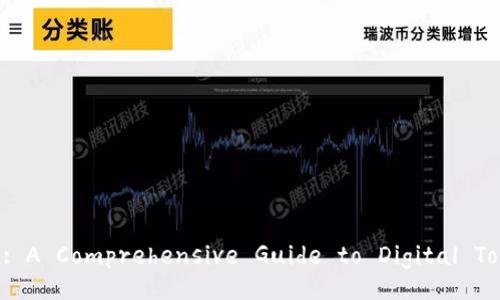Understanding Tokenization: A Comprehensive Guide to Digital
Tokenization refers to the method of converting the rights to an asset into a digital token that resides on a blockchain network. It essentially takes a real-world asset and creates a virtual version of it, thereby allowing for its representation in the digital realm. This process maintains the asset's intrinsic value while enhancing its accessibility and liquidity.
Each token can represent fractional ownership, enabling assets to be divided into smaller portions. This feature makes significant assets, such as real estate or art, more attainable to a broader range of investors since they can purchase only a fraction of the asset.
## Types of Tokens ### 1. Utility TokensUtility tokens are digital assets designed to provide access to a specific application or service within a blockchain ecosystem. They often play a crucial role in fundraising, especially during Initial Coin Offerings (ICOs). These tokens allow users to participate in certain functions of a platform, acting similarly to a digital coupon.
### 2. Security TokensSecurity tokens represent traditional assets, such as stocks or bonds, in a digital format. Each security token is tied to an underlying asset and often complies with securities regulations. Hence, they offer an alternative funding source by broadening access to traditional investment opportunities.
### 3. Non-Fungible Tokens (NFTs)Non-fungible tokens are unique digital assets representing ownership of a specific item, artwork, or collectible. Unlike cryptocurrencies, which are interchangeable (fungible), NFTs are distinct and carry their unique values, making them particularly popular in the realms of digital art and collectibles.
### 4. Governance TokensGovernance tokens grant holders voting rights within a decentralized organization or protocol. These tokens empower users to vote on proposals or changes to the protocols, thereby allowing communities to have a say in their governance structures.
## Benefits of Tokenization ### 1. Increased LiquidityTokenization increases liquidity for many asset classes that are typically illiquid. By allowing fractions of assets to be bought and sold, tokenization enables a broader market participation, making it easier for investors to enter or exit their positions.
### 2. 24/7 TradingWith the advent of blockchain technology, tokenized assets can be traded around-the-clock without the limitations of traditional banking hours. This continuous trading allows for immediate transaction execution, leading to enhanced market efficiency.
### 3. Greater AccessibilityTokenization democratizes investment opportunities by allowing smaller investors access to previously unattainable assets due to high costs. Fractional ownership opens doors for many individuals, resulting in a more inclusive financial ecosystem.
### 4. Enhanced Security and TransparencyTransactions involving tokens are recorded on a blockchain, providing a transparent and immutable ledger. This increases trust in the system, as all transactions are auditable and verifiable. Moreover, tokenized assets often fundamentally increase security, as they typically reduce the chances of fraud.
## Technical Foundations of Tokenization Tokenization relies heavily on blockchain technology. Blockchain serves as a decentralized ledger, assuring all transactions remain transparent and tamper-proof. Here’s how it works: ### 1. Smart ContractsSmart contracts are self-executing contracts with the terms of the agreement directly written into the code. They automate processes and enforce compliance between parties, significantly reducing the need for intermediaries.
### 2. Decentralized Applications (DApps)DApps are applications that run on a blockchain network. They utilize the advantages of decentralization, security, and transparency, making them ideal for creating, managing, and trading tokens.
### 3. InteroperabilityWith different blockchains operating in various ecosystems, interoperability allows for interaction and transfer of tokens across multiple chains. This fosters a more connected environment, enhancing liquidity and user engagement.
## Applications of Tokenization Tokenization holds transformative potential across various sectors. Let’s explore some key industries where tokenization is making an impact. ### 1. Real EstateTokenization of real estate allows investors to buy fractions of properties, thereby reducing the barriers to entry in real estate investments. Platforms can create security tokens backed by the value of the property, providing investors with access to rental income and capital appreciation.
### 2. Art and CollectiblesTokens representing unique artworks or collectibles can be bought and sold easily, enabling a more extensive market. NFTs have emerged as a new way to ascribe ownership and provenance to digital art, ensuring artists receive royalties for future sales.
### 3. Financial ServicesThe financial sector is becoming increasingly open to tokenization. By creating digital representations of traditional assets, banks can improve settlement times and reduce costs. The speed and efficiency of trading security tokens can revolutionize financial markets.
### 4. Gaming and Virtual GoodsIn the gaming industry, tokenization empowers players to have true ownership of in-game assets, which can be traded or sold outside the gaming platform. This transition provides a method for players to monetize their skills and investments.
## Frequently Asked Questions (FAQs) ### What are the risks associated with tokenization? Tokenization, while offering numerous benefits, comes with its own set of risks: #### 1. Regulatory ConcernsThe regulatory framework surrounding tokenization is continually evolving. Staying compliant with local and international regulations can be challenging, leading to potential legal pitfalls for businesses engaging in tokenization.
#### 2. Security ThreatsWhile blockchain technology offers enhanced security features, it is not infallible. Cases of hacking, fraudulent schemes, and mismanagement of private keys can lead to significant losses of tokens, affecting investor confidence.
#### 3. Market VolatilityTokenized assets, especially cryptocurrencies and NFTs, are prone to high levels of volatility. Price fluctuations can lead to unpredictable investment returns, making it essential for investors to conduct thorough research before engagement.
### How can businesses get involved in tokenization? Businesses looking to leverage tokenization can explore the following steps: #### 1. Identifying Suitable AssetsAssess which of your assets could benefit from tokenization. Understanding the value proposition for potential buyers is crucial for creating tokens that will attract interest.
#### 2. Partnering with Technology ProvidersEngaging with blockchain technology companies or platforms specializing in tokenization can streamline the process. They provide the necessary tools and expertise to facilitate the creation and management of tokens.
#### 3. Ensuring Regulatory ComplianceUnderstanding regulatory requirements is critical. Businesses must navigate the complexities of security regulations and ensure compliance to avoid legal challenges.
### What impact does tokenization have on traditional financial systems? Tokenization is reshaping traditional financial systems in various ways: #### 1. DisintermediationTokenization reduces reliance on intermediaries, such as brokers or clearinghouses. As a result, transactions can be completed faster and at lower costs, disrupting traditional financial practices.
#### 2. Democratization of InvestmentBy allowing fractional ownership of assets, tokenization promotes broader access to investments, making it possible for smaller investors to participate in markets that were once dominated by the wealthy.
#### 3. Enhanced Risk ManagementTokenization offers opportunities to develop new risk management tools and financial products tailored to unique tokenized assets, enabling better portfolio diversification for investors.
### What future trends can we expect in tokenization? The future of tokenization is promising, with several trends emerging: #### 1. Widespread Adoption in Various IndustriesAs regulations become clearer and technology matures, we can expect more industries to adopt tokenization as a standard practice. This will lead to increased market participation and innovation.
#### 2. Integration with Traditional AssetsFuture advancements will likely involve integrating tokenized assets with traditional financial products, providing investors with diverse options to manage their portfolios effectively.
#### 3. Expansion of NFT MarketsNon-fungible tokens will continue growing, particularly in digital art, gaming, and virtual real estate. Innovative applications of NFTs will emerge, creating new markets and opportunities for creators and investors alike.
In conclusion, tokenization is a powerful tool that holds the potential to reshape various industries. From enhancing liquidity and accessibility to providing new avenues for investment and ownership, its influence cannot be overstated. By understanding the nuances of tokenization, stakeholders can harness its benefits and prepare for the future of asset management in the digital age.




